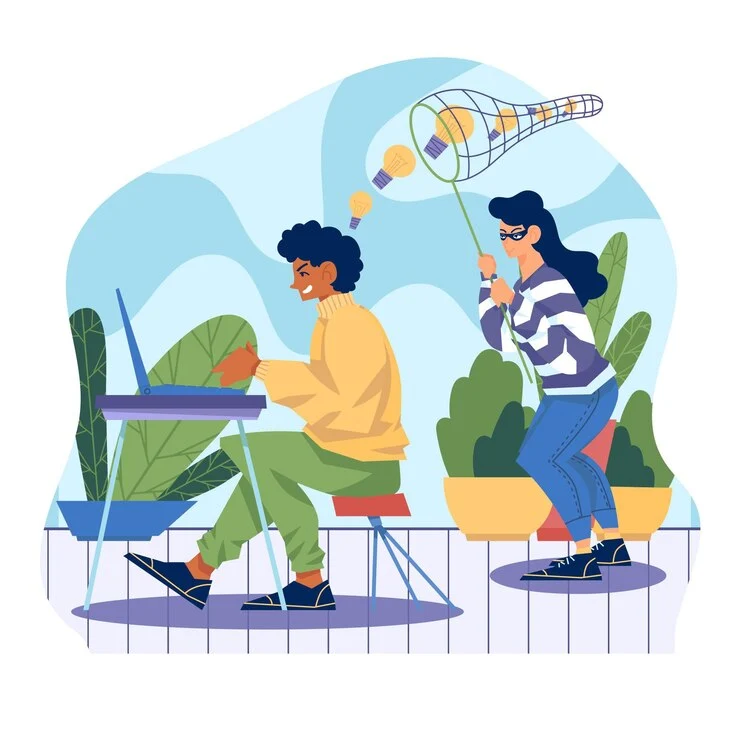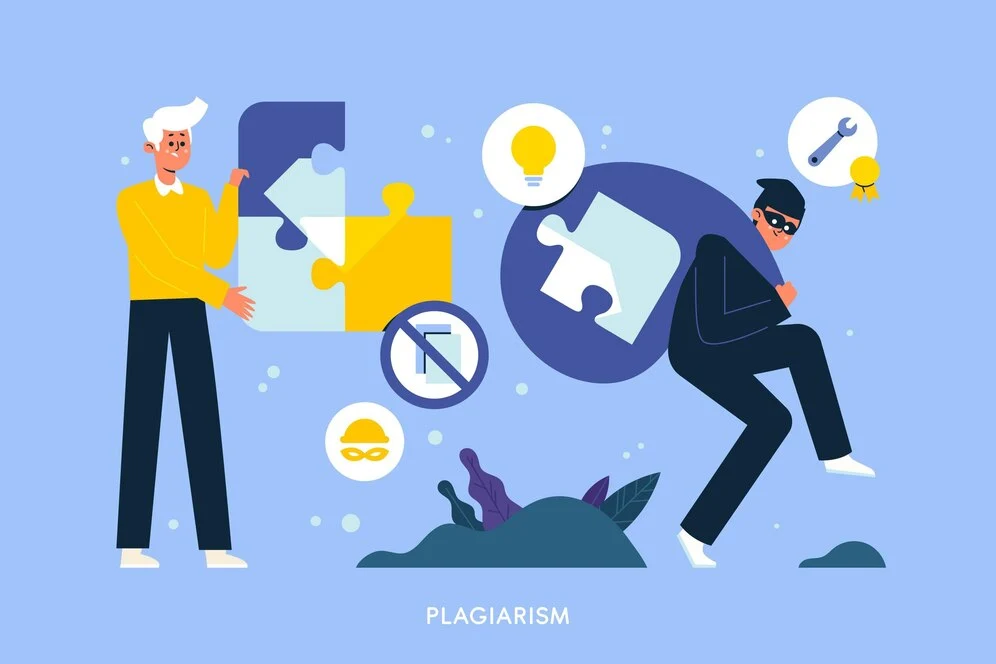Key Takeaways:
- Global plagiarism, presenting someone else’s entire work as your own, is a major academic and professional offense.
- It disrespects the original creator’s work and undermines the core principles of honesty and integrity in research and writing.
- Plagiarism can lead to severe consequences, including failing grades, expulsion, job loss, and legal issues.
Global plagiarism is a serious issue that is most often the result of a lack of understanding about the importance of originality in academic and professional work.
It involves presenting someone else’s entire work as one’s own, which not only discredits the original creator but also hampers the advancement of knowledge.
This article aims to shed light on the concept of global plagiarism, its implications, and ways to prevent it. It is crucial for everyone, especially students and content creators, to understand and avoid this form of plagiarism.
Protect Your Brand & Recover Revenue With Bytescare's Brand Protection software
What Is Global Plagiarism?
Global plagiarism refers to the act of taking an entire work written by someone else and passing it off as your own.This can include having someone else create an essay or assignment for you or presenting a piece you find online as your own.
It is important to note that intentional and direct deception about the authorship of a work is considered the most serious form of plagiarism.
It can have severe consequences, and to ensure you aren’t accidentally plagiarising, consider running your work through a plagiarism checker tool prior to submission.
Examples of Global Plagiarism
Global plagiarism involves taking an entire work by someone else and passing it off as your own. Here are some examples:
Copy-Pasting an Entire Work: If you copy-paste an entire article, book, or other work from the internet or another source and submit it as your own, this is a clear example of global plagiarism.
Submitting Someone Else’s Work: Submitting work that is not your own, whether it be hiring someone to write for you or using online sources without proper citation, is considered plagiarism.
Using a Ghostwriter Without Attribution: If you hire a ghostwriter to write a book, article, or speech and then present it as your own work without giving any credit to the ghostwriter, this is also considered global plagiarism.
Remember, global plagiarism is considered a serious offense as it involves falsely claiming authorship of someone else’s work.
It can have severe consequences, so it’s always best to create your own original work and properly cite any sources you use.
Useful Resource: Examples of plagiarism
Protect Your Brand & Recover Revenue With Bytescare's Brand Protection software
Various Forms of Global Plagiarism

Plagiarism can take many forms, and with the rise of the internet, new methods of global plagiarism have emerged. Here’s a breakdown of some common types:
Traditional Plagiarism:
- Direct Copying: This is the most straightforward type, where someone copies content word-for-word from a source without attribution.
- Paraphrasing: Rewriting someone else’s work while maintaining the core ideas without proper citation.
- Patchwriting: Copying and pasting bits and pieces from various sources to create a new “work” without proper citations.
Digital Age Plagiarism:
- Mosaic Plagiarism is mixing a few original sentences with copied phrases or sentences from various sources without proper citations.
- Web Scraping: Using automated tools to steal content from websites.
- Remix Plagiarism: Taking content (text, images, videos) and manipulating it slightly (e.g., changing colors, adding filters) and presenting it as original.
- Ghost Citation Plagiarism: Creating fake citations for sources that don’t exist, giving the illusion of supporting evidence.
Useful Resource: Ghost Citation Plagiarism
Global Considerations:
- Language Barriers: Plagiarism detection can be trickier with content in languages not well-represented in plagiarism checkers.
- Translation Plagiarism: Translating existing content from another language and presenting it as original.
- Purchased Papers: Buying pre-written essays or research papers online and submitting them as your own work.
Beyond Textual Content:
- Image Plagiarism: Using copyrighted images without permission or attribution.
- Code Plagiarism: Copying someone else’s code without proper credit, especially in programming.
- Data Plagiarism: Misusing or misrepresenting research data collected by others.
How does global plagiarism differ from traditional plagiarism?
Global plagiarism and traditional plagiarism are both unethical practices that involve using someone else’s work without proper attribution. However, they differ in the extent and nature of the copied content.
| Global Plagiarism | Traditional Plagiarism | |
|---|---|---|
| What is it? | Global plagiarism is when you present an entire piece of work created by someone else as your own. | Traditional plagiarism, also known as verbatim plagiarism, is when you copy someone else’s words exactly without giving them credit. |
| Example | If you submit an essay or assignment written by someone else or found online as your own, that’s global plagiarism. | If you copy and paste someone else’s words into your work without giving them credit, whether the text is identical or slightly changed, that’s traditional plagiarism. |
| How to avoid it? | Always create your own essays and assignments. | Always use quotation marks for the copied text and include a citation to the original source. |
| How serious is it? | This is considered the most severe form of plagiarism, and it can lead to serious consequences. | While it’s a serious form of plagiarism, it can sometimes happen by accident if you don’t know how to properly quote. |
Remember, both types of plagiarism are serious ethical issues and can lead to severe consequences.
Protect Your Brand & Recover Revenue With Bytescare's Brand Protection software
Factors Contributing to the Growth of Global Plagiarism

The rise of global plagiarism can be attributed to several factors:
Ease of Access to Information: The internet has made it incredibly easy to access a vast amount of information and content. This ease of access can sometimes lead individuals to plagiarise entire works.
Pressure to Succeed: In academic and professional settings, there is often immense pressure to succeed. This pressure can sometimes lead individuals to resort to unethical practices like global plagiarism.
Lack of Awareness: Some individuals may not fully understand what constitutes plagiarism and may unknowingly engage in it.
Inadequate Penalties: If the penalties for plagiarism are not severe enough, individuals may feel that they can get away with it.
Technological Advancements: The development of sophisticated paraphrasing tools and AI technologies can sometimes facilitate global plagiarism.
Cultural Differences: In some cultures, the concept of intellectual property is not as strongly recognised, which can lead to instances of plagiarism.
To combat global plagiarism, it’s important to promote awareness about plagiarism, enforce strict penalties for violations, and encourage ethical practices in all forms of writing and research.
Consequences of Global Plagiarism
Global plagiarism, the act of presenting someone else’s entire work as your own, can lead to severe consequences. Here are some potential repercussions:
- Academic Consequences: In an educational setting, global plagiarism is often met with strict penalties. These can range from receiving a failing grade for the assignment or course, to more severe punishments such as suspension or even expulsion from the institution.
- Professional Repercussions: In the professional world, the consequences can be equally severe. Careers can be ruined if a person is found guilty of plagiarism. It can lead to job loss, legal consequences, and a tarnished professional reputation that can make it difficult to find future employment.
- Legal Implications: Plagiarism can also have legal consequences. If the original work was copyrighted, the author may have grounds to sue the plagiarist for copyright infringement.
- Damage to Reputation: Beyond the academic and professional consequences, global plagiarism can also cause significant damage to a person’s personal reputation. It can lead to loss of respect among peers and colleagues, and can damage personal relationships.
- Loss of Trust: Once a person has been found guilty of plagiarism, it can be very difficult to regain trust. Teachers, professors, colleagues, and peers may question the authenticity of the person’s future work.
- Ethical Implications: Plagiarism is fundamentally an unethical act. It involves taking credit for someone else’s work and is a form of stealing. Those who commit plagiarism are violating the basic principles of honesty and integrity.
Is it Possible to Detect Global Plagiarism?
Absolutely, detecting global plagiarism is feasible. Various educational institutions and online platforms employ automated software to identify instances of plagiarism.
These sophisticated tools compare the submitted text with a vast database of existing works to find any matches. This makes it possible to spot if an entire work has been lifted from another source, which is what global plagiarism entails.
It’s crucial for anyone creating content, be it a student or a professional writer, to check their work for plagiarism before submission. Several plagiarism checkers are available that can scan large documents, making it easier to detect global plagiarism.
These tools not only identify plagiarised content but also provide a detailed report, enabling further improvement of the work. Hence, these tools instill confidence in the authenticity of one’s work.

How to Avoid Global Plagiarism?
Avoiding global plagiarism, which involves presenting someone else’s entire work as your own, requires a conscious effort to respect intellectual property and maintain academic integrity. Here are some detailed steps to help you avoid this form of plagiarism:
- Understand What Plagiarism Is: The first step to avoiding plagiarism is understanding what it is. Educate yourself about the different forms of plagiarism and how to avoid them.
- Do Your Own Work: The most straightforward way to avoid plagiarism is to do your own work. This means conducting your own research, forming your own arguments, and writing your own papers or articles.
- Cite Your Sources: Whenever you use someone else’s ideas or words in your work, it’s important to give them credit by citing their work. This includes both direct quotes and paraphrased information.
- Use Quotation Marks for Direct Quotes: If you’re using someone else’s words verbatim, make sure to put them in quotation marks and provide a citation.
- Paraphrase Properly: If you’re putting someone else’s ideas into your own words, make sure you’re not just changing a few words around. A proper paraphrase involves completely rewriting the information in your own words and style.
- Use Plagiarism Detection Tools: There are many tools available that can help you detect potential instances of plagiarism in your work. These tools compare your work to a vast database of academic papers and online content to identify any matches.
- Ask for Help If You’re Unsure: If you’re not sure whether something constitutes plagiarism or how to properly cite a source, don’t hesitate to ask for help. This could be a teacher, a librarian, or a writing center at your school.
By following these steps, you can ensure that your work is original and respects the intellectual property rights of others.
Remember, plagiarism is a serious offense that can have severe academic and professional consequences, so it’s always worth taking the time to avoid it.
Conclusion
In academic writing, global plagiarism is a severe type of academic dishonesty. It involves presenting the entire content of another as one’s own, often unintentionally. This duplicate content undermines the advancement of knowledge.
Thanks to advanced technology, content creators can use an online tool like Bytescare plagiarism checker to ensure originality in content creation. This tool helps identify unintentional plagiarism and credits the original creator.
It’s a crucial step for all content creators in maintaining academic integrity. For more information, contact us at Bytescare.
The Most Widely Used Brand Protection Software
Find, track, and remove counterfeit listings and sellers with Bytescare Brand Protection software

FAQs
State 3 different types of plagiarism.
Plagiarism can take many forms, 3 of them are:
a. Direct Plagiarism: This is when you copy and paste someone else’s work word-for-word without giving any credit or using quotation marks. It’s a deliberate act of academic dishonesty.
b. Accidental Plagiarism: This occurs when someone unintentionally fails to cite their sources, or misquotes their sources, or unintentionally paraphrases a source by using similar words, groups of words, and/or sentence structure without attribution.
c. Patchwork Plagiarism: Also known as “mosaic plagiarism,” this type involves copying phrases from a source and adding these into your own work without crediting the original source. It’s like piecing together a patchwork quilt. It can be deliberate or unintentional.
What is the difference between verbatim and global plagiarism?
Verbatim plagiarism is when you copy someone else’s words exactly without giving them credit. On the other hand, global plagiarism is when you present an entire piece of work created by someone else as your own.
Why is global plagiarism unethical?
Global plagiarism is unethical because it involves taking credit for someone else’s work. This is not only dishonest, but it also undermines the values of trust and integrity that are fundamental to academic and professional environments.
When global plagiarism occurs?
It occurs when someone presents the entire work of another person as their own. This can happen in academic settings, such as when a student submits a paper written by someone else, or in professional settings, such as when a writer publishes an article that was written by someone else.
What is global plagiarism vs incremental plagiarism?
Global plagiarism involves copying an entire work, while incremental plagiarism involves copying parts of a work. Both are serious offenses, but global plagiarism is often considered more severe because it involves taking credit for an entire piece of work.
Is global plagiarism a serious issue?
Yes, global plagiarism is a serious concern that undermines academic integrity and hinders the advancement of knowledge. It disrespects the work of original creators and erodes trust in research and scholarship.
Ready to Secure Your Online Presence?
You are at the right place, contact us to know more.

